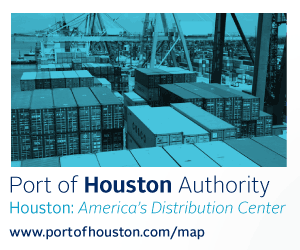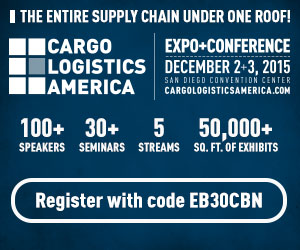|
Headhaul flows from Asia to the West Coast of North America during the first half of 2015 were half a percent down compared to a year ago, whereas traffic bound for the East Coast of North America rose by 23.5 percent, according to Drewry Maritime Research.
For the whole of North America, exports from Asia were up 5.4 percent in the first half of the year. In July, WCNA imports were at least showing some growth – albeit less than 1 percent – while the pace of ECNA growth had slowed to 14 percent.
By the end of July, the 12-month growth average for the Asia-WCNA trade had fallen to 2.2 percent – its lowest point since February 2014. The rerouting of cargo from West Coast gateways to those lying east of the Panama Canal continues.
Four fifths of the West Coast eastbound trade is handled at the U.S. terminals, which saw the number of full inbound containers drop by 2.3 percent in July year-over-year, after contracting by 4 percent in the first half. In contrast, the Canadian ports handled 9.6 percent more imports in the first six months while loads to Mexico surged by almost 22 percent.
On an annual basis, today the WCNA ports are handling some 275,000 TEUs of additional Asian imports compared to three years ago, whereas the ECNA facilities are attracting 1.2 million TEUs of added volume.
Throughput results for August at the West Coast ports have, however, bucked the trend. Imports (all trades) landed at the newly combined ports of Seattle and Tacoma soared by 22 percent compared to twelve months beforehand. Inbound traffic at Oakland was 15 percent higher and Long Beach set a pace of 23 percent. Los Angeles saw a growth rate of only 3.8 percent but in pure volume terms the port enjoyed its best August performance since 2006.
This rebound in the fortunes of the USWC ports is not because importers have been entirely forgiving of the ILWU/PMA dispute earlier in the year, but is
|

more a function of the peak season, researchers say. One of the essential requisites for seasonal cargo is a fast transit time, and the West Coast ports – especially Long Beach and Los Angeles – have little competition in that respect.
However, Drewry claims the longer term trend – with the widened Panama Canal due to open in April 2016 – is for more cargo to migrate to the East.
Drewry says the narrowing gap between West Coast and East Coast rates is significant. In the last seven months, the difference between USWC and USEC rates has averaged some $1,800. By the end of September, however, the gap had reduced to no more than $1,000, which is probably the smallest it has ever been. Lower utilization on the USEC loaders is one reason why rates to the East Coast have fallen more sharply; at the same time, the carriers are probably intent on lowering the differential in a bid to lure more West Coast importers to switch to the East Coast.
WCNA exports to Asia have certainly recovered from the slump in volume that occurred during the winter months due to bad weather, congestion and a temporary Chinese ban on American shipments of distillers dried grain. In July, westbound ship utilizations were back up to 42 percent compared to a low of 32 percent in January, but a strong dollar has meant that the actual volume of outbound traffic is no greater than it was a year ago.
In conclusion, Drewry says further migration of cargo to the East Coast can be expected in the approach to the opening of the widened Panama Canal.
|




